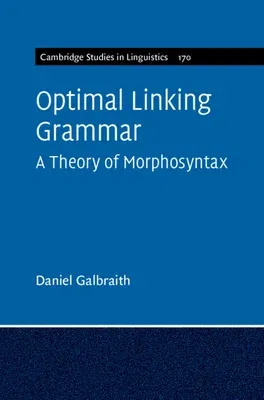Daniel Galbraith
(Author)Optimal Linking GrammarHardcover, 14 April 2023

Qty
1
Turbo
Ships in 2 - 3 days
In Stock
Free Delivery
Cash on Delivery
15 Days
Free Returns
Secure Checkout

Part of Series
Cambridge Studies in Linguistics
Print Length
300 pages
Language
English
Publisher
Cambridge University Press
Date Published
14 Apr 2023
ISBN-10
1316516598
ISBN-13
9781316516591
Description
Product Details
Author:
Book Format:
Hardcover
Country of Origin:
US
Date Published:
14 April 2023
Dimensions:
22.86 x
15.24 x
1.91 cm
ISBN-10:
1316516598
ISBN-13:
9781316516591
Language:
English
Location:
Cambridge
Pages:
300
Publisher:
Weight:
594.21 gm